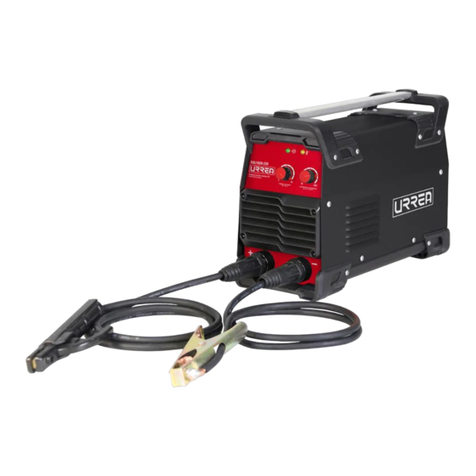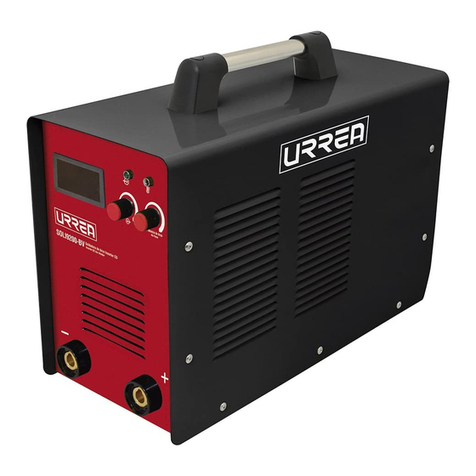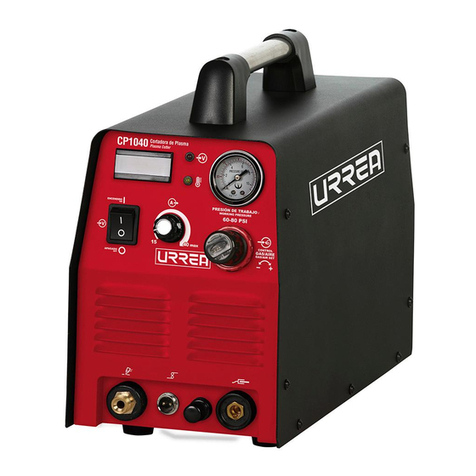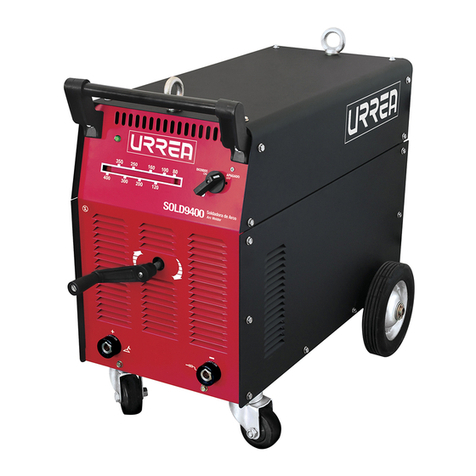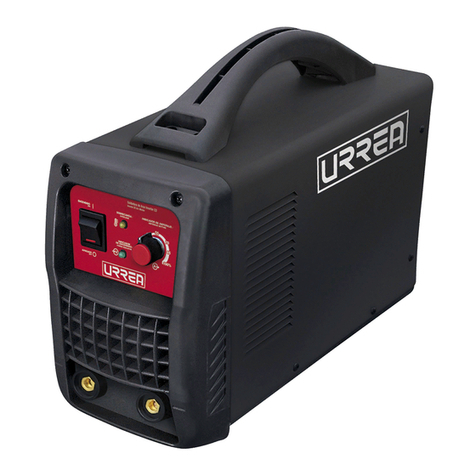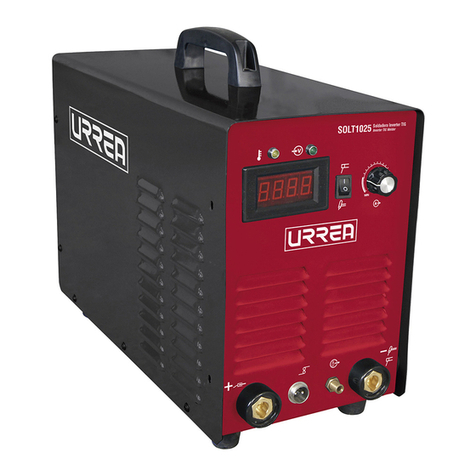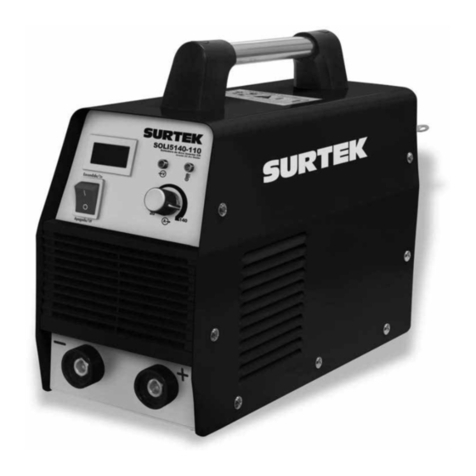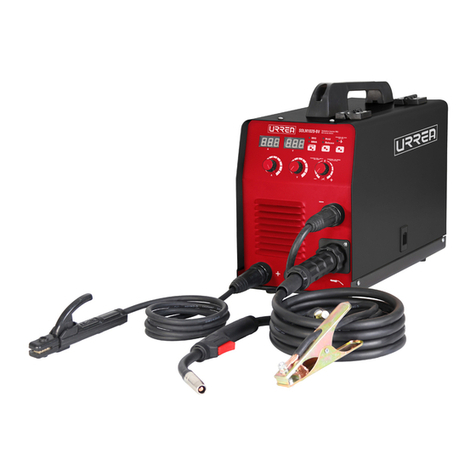
• Refuerce la protección del cable de la Solda-
dora y del cable remoto para evitar que sea
aplastado, machucado o dañado de alguna
otra manera.
• Coloque un cartel en el lugar de instalación
que diga “LA SOLDADORA ESTA EN USO, NO
TOCAR” para evitar que otra persona se acer-
que y toquen.
• La reparación de la Soldadora debe ser lle-
vada a cabo solamente por personal calificado.
La reparación o el mantenimiento realizado
por una persona no calificada puede generar
peligro de lesión.
• Cuando esté reparando la soldadora use úni-
camente partes de reemplazo idénticas. El uso
de partes no autorizadas o la falta de segui-
miento de las instrucciones de mantenimiento
puede ocasionar el riesgo de una descarga
eléctrica o lesión.
Cada uno de los puntos que se enumeran a
continuación deben de verificarse cuidadosa-
mente antes de comenzar a trabajar.
• Asegúrese de que el equipo tenga una co-
nexión a tierra confiable.
• Asegúrese de que no exista ningún corto-
circuito en la soldadora y en sus dos salidas de
corriente.
• Asegúrese de que siempre haya protección
aislante en los cables de salida y entrada, ade-
más de una conexión confiable.
• La soldadora debe de ser revisada por per-
sonal calificado después de un periodo de seis
meses de trabajo, por lo que debe de tomar en
cuenta lo siguiente:
- Mantenga una rutina de limpieza, remueva el
polvo excesivo y verifique que no haya partes
sueltas.
- Cambie el control del cable de la soldadora
para anticiparse a posibles deterioros.
• Reemplace el cable de alimentación de la sol-
dadora tan pronto como se descubra que está
roto o dañado.
• Asegúrese de que haya suficiente suministro
de energía para que la soldadora trabaje co-
rrectamente.
NOTA: Para acceder a cualquier fuente de
energía es necesario utilizar el equipo de pro-
tección necesario.
ATENCIÓN: Antes de abrir su soldadora des-
conecte de la fuente de energía eléctrica.
ATENCIÓN: No dude en contactar nuestro
centro de servicio autorizado para asistencia
técnica cuando se encuentre con problemas de
operación o que considere dificil de reparar.
Esta soldadora debe ser operada por una sola
persona. Las partes principales de esta má-
quina son el transformador y el núcleo móvil.
Se caracteriza por un suave y estable arco con
un minimo de salpicadura. La soldadora puede
trabajar con electrodos ácidos, alcalinos y elec-
tródos celulósicos.
Se obtiene excelentes resultados al soldar en
acero suave, acero de medio carbono, aleacio-
nes de acero suave, acero inoxidable y otros
metales no ferrosos tales como aleación niquel
y aleación de cobre. La soldadora puede ser
utilizada en la construcción naval, calderas, re-
cipientes a presión, en la construcción, plantas
eléctricas, minería, etc.
ESTRUCTURA DE LA SOLDADORA
La soldadora tiene una estructura simple, para
facilitar su transporte; cuenta con empuñadura
y ruedas.
El núcleo móvil de la soldadora y sus cuatro co-
nexiones se encuentran en la parte frontal de
la maquina.
Según las necesidades, esta soldadora puede
ser utilizados tanto en la soldadura de arco de
corriente alterna (CA) y corriente directa (CD).
Constituida por dos partes principales esta má-
quina de soldar cuenta con un embobinado
primario y embobinado secundario, con un nú-
cleo de hierro.
El interruptor, la luz que indica el encendido y
la manivela de ajuste de corriente de salida se
encuentra en el panel frontal. El ventilador de
enfriamiento, caja de entrada de alimentación
de conexión y tornillo de la tierra se encuen-
tran en la parte posterior de la máquina.
REPARACIÓN
NORMAS ESPECÍFICAS DE SEGURIDAD
4
CARACTERÍSTICAS
SOL93025 manual.indd 4 12/09/16 3:08 p.m.

